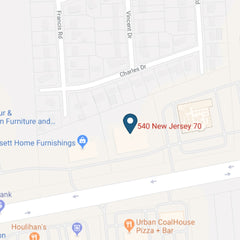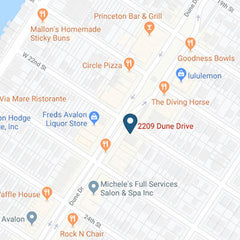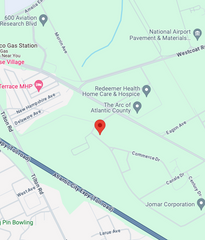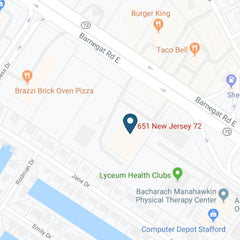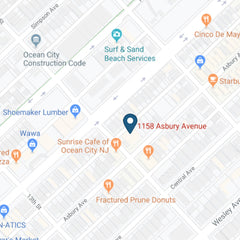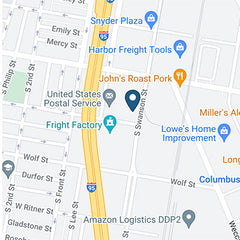If you are looking to transform your space easily and affordably – Laminate Flooring is the way to go! It shares the same beauty of the coveted hardwood look but has a greater resistance to dents and scratches and won't fade or change color over time. And, best of all, it's easy to maintain!
What is Laminate Flooring?
Laminate flooring is made of four layers of materials that, when fused together, create a durable and beautiful floor:

1. Wear Layer – the top, clear layer that aids in the resistance of stains, fading & scratches/dents
2. Design Layer – a high-resolution photographic image that showcases the genuine wood look
3. Inner Core – high density fiberboard or HDF, which is an engineered wood product that helps keep the
laminate board stable, flat and moisture resistant
4. Backing – an added layer of moisture barrier that protects the floor from warping
The Ultimate Laminate Flooring Glossary
Thickness: This is the measurement of the top layer all the way to the backer layer and is usually measured in millimeters. It is important to note that while some laminate options come with an attached pad – that is not included in the thickness measurement. Common options include anywhere from 6-12mm. Durability isn't directly an advantage of thicker laminate flooring, but the advantages of a thicker product include:
- More realistic feel of hardwood underfoot
- Acts as a better sound barrier and has less echoing
- Greater thickness tends to mean more impact resistance
- Advanced details can be etched into the design
- Installation tends to be more forgiving because a thicker laminate product can aid in hiding subfloor imperfections however, the most important aspect to consider is how level the floor beneath the laminate is. The more imperfections that exist, the more likely it is that installation could be compromised
AC Rating: This is used to indicate the durability of laminate flooring. This is a world-wide standard that measures factors such as resistance to moisture, standing liquids, burns, stains, abrasion and impact. Ratings start at AC1 and go up to AC5. These ratings help determine the best place to use this type of flooring – for example:
- AC1: best used in moderately used spaces (Bedrooms, Closets)
- AC2: best used in medium used spaces (Living Rooms, Dining Rooms)
- AC3: best used for heavy residential use and even moderate commercial applications
- AC4: can be used in any residential application and some commercial spaces with heavier traffic
- AC5: typically only installed in heavy commercial applications
Underlayment: This refers to the thin, flexible sheet of resilient material that is installed over the subfloor before laying a new laminate floor. Think of your subfloor as the foundational support of the room, and the underlayment as the foundation for the laminate flooring. Not only does it help to level the floor it also cushions the laminate planks and helps reduce noise. It is important to follow the laminate flooring manufacturer's recommendations for underlayment materials this way you can keep your warranty intact. Some products even come with an attached pad these days, eliminating the need for you to have to decide on the underlayment. Easy-peasy if you ask us!
Here are a few of the different types of underlayment available:
- Standard Foam: the most commonly used type that consists of a thin strip of foam material that serves as the cushion between the subfloor and the laminate flooring
- Combination Foam: this is a type of underlayment that combines standard foam with a vapor barrier layer that helps protect the installation from rising moisture
- Cork: when noise reduction is a priority – you may want to consider cork underlayment; it also has natural anti-microbial characteristics
Acclimatization: this refers to the adjustment period of the product in the final environment in which its being installed in terms of moisture and humidity. It is often recommended that the product be allowed to acclimate in your home for a minimum of 48 hours before the installation begins.
Texture: This refers to how the laminate flooring will feel beneath your feet. Since laminate flooring is available in a variety of textures and finishes to simulate the look of real hardwood, some can be subtle and soft while others may appear more visible. This is a cosmetic feature and the choice you make is dependent on what your preference is.
Subfloor:The subfloor is typically something only builders and flooring installers deal with, as it is the piece of flooring that is closest to the floor joists. It is the structural flooring that provides a solid and stable flat surface to support an interior flooring like laminate. So, you may have noticed we reference "subfloor" a lot - this is because the preparation of the subfloor is so important to the life span and performance of your laminate flooring. Being that laminate flooring is a thin, resilient flooring option it is vulnerable to any problems that originate beneath it (ie nails, separating floor joists, moisture)
How to Buy Laminate Flooring
The best way to make sure laminate flooring is best for you is to visit a showroom (like ours, hint, hint!) to see what the product looks and feels like. We recommend that you use online catalogs and websites to conduct preliminary research, but when buying laminate flooring in particular you should make your final selection in store where you have an opportunity to touch and feel the product. Also keep in mind that when you purchase flooring products you always want to buy more than the exact square footage of the room. This extra flooring accounts for mistakes or hard-to-fit areas. Another thing you will have to think about is the edging or molding products that will match the new floors. These are the finishing touches that will make your space feel complete and are important for the overall appearance of the room.
Care & Maintenance of Laminate Flooring
Part of what may have sold you on the idea of Laminate Flooring is the ease of care and maintenance compared to its alternative options like hardwood, tile or stone. Here are a few basic supplies you should have on hand to clean your new laminate floors:
- Dry Mop
- Vacuum with soft brush attachment (the softer the better!)
- Sponge Mop
- Manufacturer approved floor cleaner
- Furniture protector pads for chairs, stools and heavy furniture with legs that will sit on top of the floor
Remember, proper care for your floor will make a big difference in how satisfied you are with it, as well as how well it holds up. To learn more about cleaning and maintenance tips – check out our Laminate and Vinyl Maintenance Guide!


